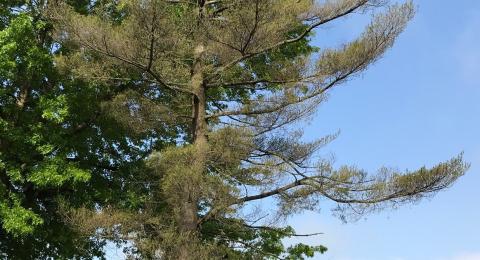
Eastern white pine (Pinus strobus) is one of the most economically valuable and ecologically important forest trees in the northeast. It is also an abundant landscape tree with numerous cultivars available through the nursery trade. In recent years, white pines in the region have exhibited symptoms of decline, which include: yellowing/browning needles, premature needle shedding, thinning canopies, undersized shoots and needles, resinosis, branch dieback and death. Widespread health issues for white pine first developed in approximately 2009. In the ten years since these problems became apparent, a great deal has been learned and it’s now known that multiple fungal pathogens, an insect pest and a changing climate are responsible. First and most importantly, white pine needle disease (WPND) is primarily responsible for the symptoms that many trees exhibit and is caused by several fungal pathogens. Branch and trunk cankering, caused by Caliciopsis canker, is also as an important component of the decline complex although disease severity varies by region. Most recently, the eastern white pine bast scale has been identified as an important predisposing agent that helps facilitate Caliciopsis canker. What is particularly interesting about the pathogens and insect pest responsible for white pine decline is that each is known or believed to be native in eastern North America. The widespread distribution of symptomatic trees and lack of a non-native pathogen or insect lead researchers to investigate the role of environmental conditions, which have been altered by a changing climate. What they found was that an increase in temperature and precipitation from May through July has helped to fuel the WPND epidemic. It is believed that the issues facing eastern white pine will only continue but management options do exist to help improve the health and vigor of stressed white pines.
Visit University of Massachusetts Amherst's Dieback of Eastern White Pine (Pinus strobus): Pathogens, Pests and a Changing Climate.
